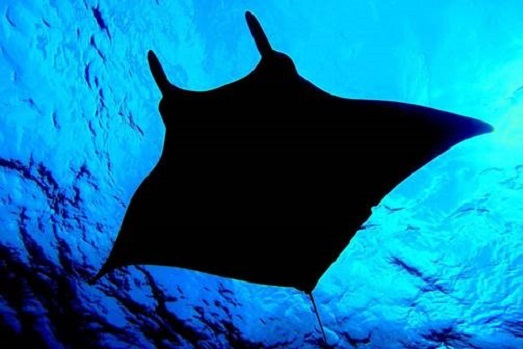From December 3 to 9, 2017, personnel from the Marine Ecosystems Laboratory of the Autonomous University of Baja California Sur (UABCS), experts from the Revillagigedo National Park and the Baja California and North Pacific Peninsula Regional Office of the National Commission of Protected Natural Areas ( CONANP), visited 3 insular bodies of the recently declared Natural Reservoir, Revillagigedo National Park, aboard a large Storm Vessel.
During this period 12 diving expeditions were carried out in a period of 5 days.
On the crossing to the islands of Socorro, San Benedicto and Roca Partida, censuses of fish, large pelagics, invertebrates, birds, marine mammals and sea turtle nesting sites were detected and monitored. As well as the coral reef conditions and the impact that recreational diving could bring to the area.
A geo reference of beaches and other relevant sites was conducted as well.
After the designation of the Revillagigedo National Park by President Enrique Peña Nieto on November 27, 2017, this is the first exploratory survey of public use and biological censuses in order to obtain information for the preparation of a long term marine monitoring project.
The plan contemplates the inclusion of indicators of the effects of climate change, which will provide information that will be used for the management of public use programs of this Natural Protected Area (ANP).
The impact data of the diving activities and reaction of the species will be integrated into the load capacity study for the area carried out in 2015 by M. en C. Patricia Alexandra Álvarez del Castillo Cárdenas.
The Revillagigedo Archipelago is located in the eastern Pacific Ocean 386 km southwest of the southern tip of the Baja California peninsula, 600 km off the coast of the state of Colima and approximately 386 km south of Cabo San Lucas, B.C.S. It is formed by the islands of San Benedicto, Socorro, Clarión and the islet of Roca Partida with its corresponding adjacent waters.
The islands make up a habitat of vital importance for various endemic species of flora and fauna, particularly sea birds. The surrounding waters represent an exceptional convergence of two marine biogeographic regions: the Northeast Pacific and the Eastern Pacific.
This Protected Natural Area is at the crossroads where the California current and the equatorial mix generate a complex and highly productive transition zone that hosts a remarkable concentration of large pelagic species: giant rays, dolphins, whales and sharks.
Comunicado de prensa emitido por CONANP y Universidad Autónoma de Baja California Sur





